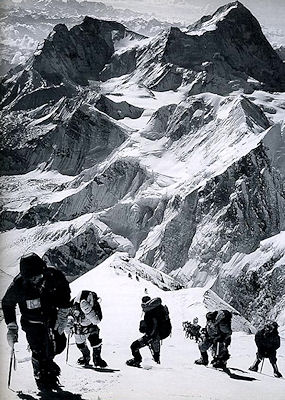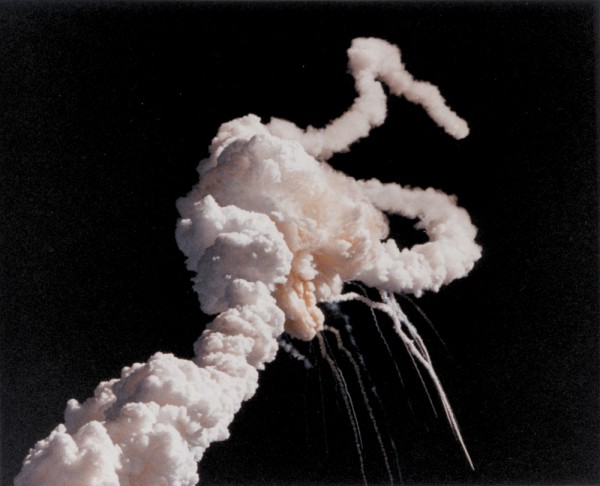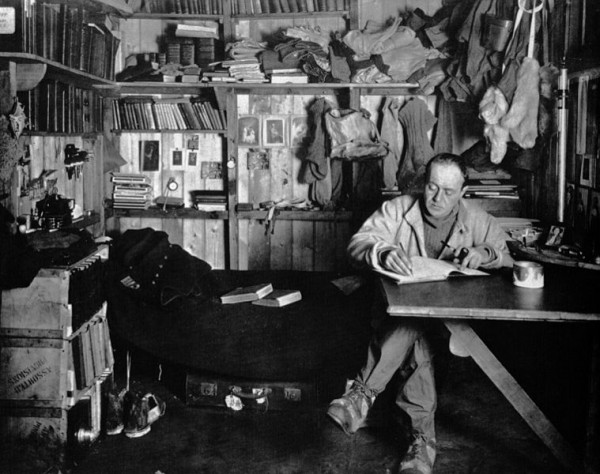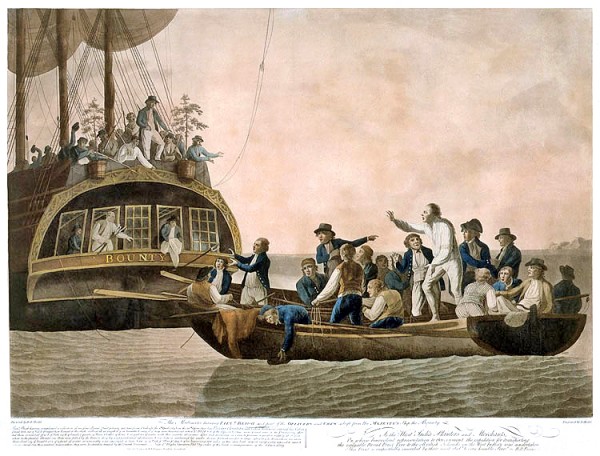There are many people with high aspirations and bad luck or leadership skills for us to read about and sympathize with. One note-worthy exclusion from this list is Ernest Shackleton and his failed venture to travel across Alaska. This is partly due to the fact that what the man did accomplish, his tale of survival, is just so darn impressive. Anyway, here are ten of the most brave groups of souls that just didn’t quite get it right.
10. Burke and Wills

Robert O’Hara Burke and William John Wills are to Australians what Lewis and Clark are to Americans. They were explorers of the frontier, people who traveled beyond the limits of colonization in search of faster ways to get around. Like Lewis and Clark, they also failed at what they sought to do (Lewis and Clark were looking for a Northwest Passage that didn’t exist—what they found was a huge ocean). Well, the word fail is a little harsh for these guys. They did succeed at being the first Europeans to travel from the South of Australia all the way to the Northern shores. However, they failed to return alive. During the return trip, they found a base camp that was supposed to be manned, well, deserted. Burke and Wills traveled with John King who bore witness to both of their deaths and became the only man to successfully complete the journey there and back again. Overall, eight of the nineteen men enlisted on this expedition fell victim to the Australian bush.
9. Christopher Columbus and His Quest for India.

Has there ever been a more over-rated chump than the “discoverer” of the Americas? Granted, he did figure out (or at least accepted) the whole “world wasn’t flat” thing. Good for him. However, “Indians” aside, there were other humans that had supposedly set foot upon the continent’s soil long before Columbus did, such as the Viking Leif Erikson (these guys just loved to sail west, have you seen the new show on the History channel?). He might have sported giant meatballs to sail out into the big blue in search of an alternate route to India, but this Italian explorer was just one of many brave souls. He never quite figured out that the natives, the indios, were not really from India. Regardless, he endeavored to bathe the natives with the righteous light of Christianity through slavery and oppression. Perhaps he was a trendsetter in a way, but probably not for the best.
8. Chris McCandless Goes Into the Wild

Many people disagree on whether Chris McCandless was a transcendental guru or a rich, spoiled, selfish brat who hurt his family beyond measure. Whatever he was, he wasn’t a practical person. After his college graduation, Chris shed his privileged shackles and became Alexander Supertramp—an unkempt, hitchhiking adventure seeker. For a while, he lived an interesting life traveling between transient camps and working odd jobs. He embarked on a series of mini adventures, the largest being a row down the Colorado River all the way into Mexico. He soon fashioned himself as an expert survivalist who needed minimal equipment in order to endure harsh conditions. Alaska had something to say about this. One hundred and twelve days after McCandless entered the Alaskan wilderness under-geared with a lack of proper clothes, a .22 caliber rifle and a paperback guide to berries (among other things), he succumbed to starvation at the age of 24.
7. Amelia Earheart and Her Trans-World Journey

So apparently the search for this chick may have come to an end. For decades scholars have debated the fate of this beloved American idol. Amelia soared into record books as a premiere female pilot, including setting transcontinental speed marks. In 1937, she set out in a highly broadcast attempt to circumnavigate the globe via the Equatorial line. She failed by way of a disappearing act. Her plane went down somewhere over the Pacific and she was never heard from again. It is recently believed that her crash landing took place near an uninhabited island in the region of Kiribati. It seems that she lived out her days as a castaway long before Gilligan, Tom Hanks or the cast from LOST made it a popular thing to do.
6. Donner Party

There was a lot of meat but this ain’t no barbeque. Instead, these westward American pioneers ended up snacking on each other’s flesh, or so the story goes. Eighty-seven adventure seekers formed a wagon train heading from Missouri to California. They took an ill-advised route and ended up snowed in with nowhere to go. By the time help reached them, only 48 of the party members remained. They had long ago run out of food rations and had resorted to munching on their fallen comrades, families and friends. Recent speculation amid an excavation of the area sheds doubt on the extent of the reported cannibalism. It has always been apparent that the people didn’t simply chow down on each other—they took every angle they could to avoid this action (including chewing on their pet dogs). It does remain likely, however (and makes a much better story) that cannibalism had taken place here at a reasonable scale.
5. “Muttnik”, or Laika the Russian Space Dog

Laika is a terrier mix who made it cool for animals to be sent into space. The Space Race was heating up between the Soviet Union and the United States of America and the Soviets were looking to prove that humans could withstand the effects of space launch and zero gravity. To minimize the risk to its cosmonauts, they looked from man to man’s best friend to sit in the cockpit. The mission was a disgrace, and even though Laika’s fate was classified for decades to come, it was discovered that she died within just three hours of launch due to overheating. NASA was appalled by the use of canines in test flights, so they fragged monkeys and apes instead.
4. 1996 Failed Everest Expedition

In 1996, a group of well-to-do adventurers set off to climb Mt Everest, the world’s tallest mountain. What occurred next would set the tone for arguments regarding the weight of life, fame, and the commercialization of Everest. Basically what happened is that even though a life threatening weather system was nearing, many of the climbers on the mountain experienced different degrees of Summit Fever (or the urge to reach the top of their climb no matter what). The thin air gets to climbers’ heads and they continue upward in an almost zombie-like fashion. Many of these men were spurred on by the amount of money they had to spend in order to pursue this once in a lifetime chance. People even passed a dying man on their way up and again on the way down, sparking fierce debate pitting ethics versus pragmatics. A total of eight people died on Everest that day. The failed Everest Expedition of 1996 would go on to be famously chronicled by Jon Krakauer in his book Into Thin Air, one of the surviving climbers on Everest that day. Another climber Krakauer criticized was Anatoli Boukreev, who later released his own version of the story in The Climb: Tragic Ambitions on Everest.
3. January 28, 1986: Challenger

January 28, 1986 was a day of heartbreak for the modern world. It was on this day that the American Space Shuttle Challenger (so named after the famed 19th century British sea vessel that helped chart deep sea trenches) combusted en route to outer space. Just three years before the Berlin Wall came crumbling down, this single day of the Cold War era space race claimed its largest amount of casualties. Crew members Francis R. Scobee, Michael J. Smith, Ellison S. Onizuka, Judith A. Resnik, Ronald E. McNair, Christa McAuliffe, and Gregory B. Jarvis all perished during a launch malfunction. It was later determined that a faulty, metallic gasket known as an “O-ring” had been the culprit in this tragedy. Debris from the shuttle would wash up on shore many years later.
2. Robert Falcon Scott’s Antarctic Expedition

Perhaps it is his exceptionally powerful middle name, but Robert Falcon Scott was a true man’s man. By the time of his failed venture, Scott had built a solid reputation as an explorer. He had already published a book, The Voyage of Discovery (1905), about his successful foray into the Antarctica wild. Perhaps looking to pen a thrilling sequel, Scott enlisted a team and headed back into the great white. This time his mind was set on being the first man to set foot on the South Pole. Their progress went well and before long they arrived at their destination—only to find a Norwegian flag flying proudly. Roald Amundsen and his team had found their way to the South Pole just days earlier. Bitterly disappointed, Scott turned his men around and began a long walk of shame back to base camp. Adding cosmic insult to injury, Scott and the rest of his expedition perished on the return trip.
1. William Bligh, Mutiny on the Bounty

There is an array of failed leaders who have lost control of their crew through the years, but for some reason or another, the mutiny on the Bounty continues to capture imaginations worldwide. Apparently, Bligh was such a tool that most of his crew jumped at the chance of remaining in Tahiti to enjoy an easygoing life on an island paradise. Sent adrift in a lifeboat disgraced, Bligh eventually made it back to England. England wasn’t satisfied with one failed venture to Tahiti and so decided to send the HMS Pandora to apprehend the mutineers. The Pandora did catch fourteen of them, however she ran aground on the way back drowning 4 of the prisoners and 31 of its own crew. Was the vengeance of watching three men get hanged worth it all? Hindsight doubts it.